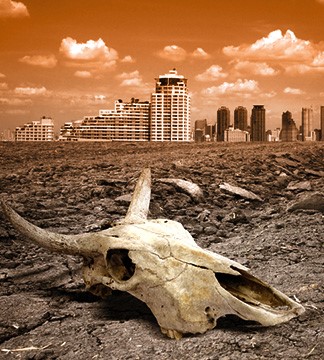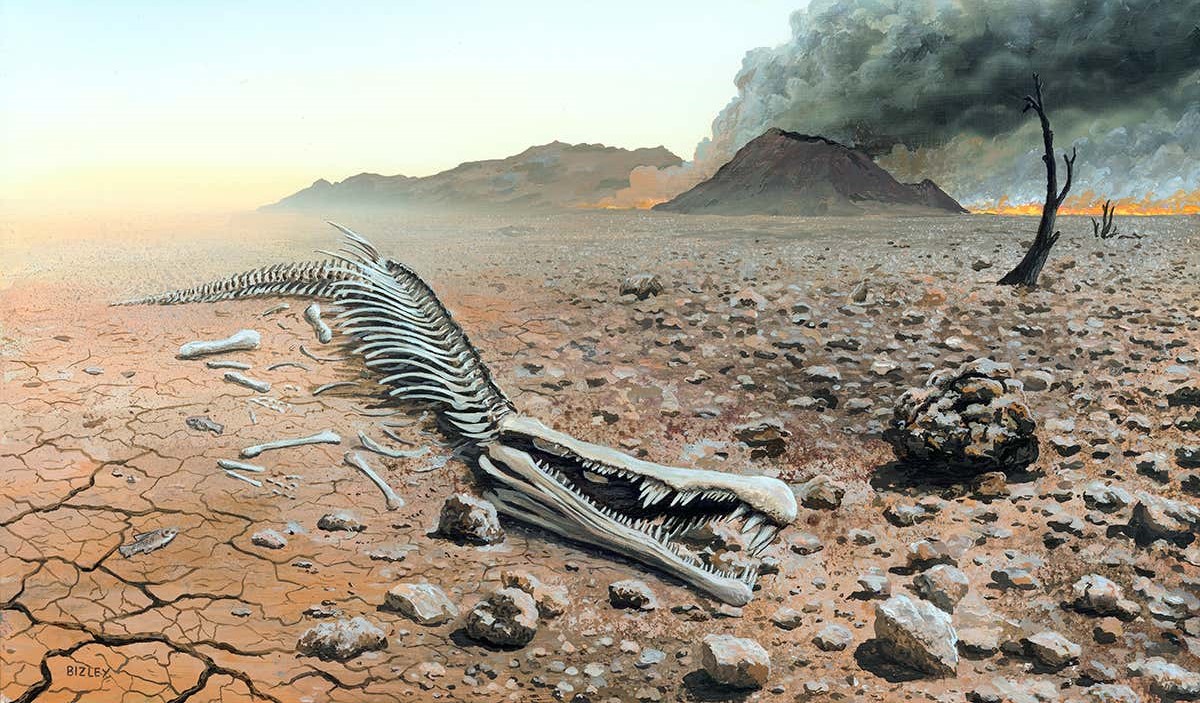What is it like leading up to a major extinction?
Conditions
Previous mass extinctions came with warning signs. Those indicators were very similar to what we're seeing now.
The most devastating mass extinction in our planets history is called the Permian-Triassic extinction, or the "Great Dying." It happened 252 million years ago, prior to the dawn of the dinosaurs.
During the Great Dying, roughly 90% of the Earth's species were wiped out; less than 5% of marine species survived, and only a third of land animal species made it, according to National Geographic. The event far eclipsed the cataclysm that killed the last of the dinosaurs some 187 million years later.
Scientists think the mass extinction was caused by a large-scale release of greenhouse gases into the atmosphere by Siberian volcanoes, which warmed the planet — so there were warning signs. In fact, a 2018 study noted that those early signs appeared as much as 700,000 years before the extinction.
Today's changes are similar but less severe — so far.

Current Omens
- Nearly half of the total number of animal individuals that once shared the Earth with us are already gone.
- More than 26,500 of the world's species are threatened with extinction
- Insects are dying off at record rates. This is a major problem because insects like bees, hoverflies, and other pollinators perform an important role in fruit, vegetable, and nut production. In addition, bugs are food sources for many bird, fish, and mammal species — some of which humans rely on for food.
- The average rate of extinction over the last century is almost 100 times higher than normal.
- Many invasive species have been unintentionally spread by humans. This is a poblem because they disrupt natural communities and ecological processes. The invasive species can outcompete the native species for food and habitats and sometimes even cause their extinction.
- Oceans absorb 93% of the extra heat that greenhouse gases trap in Earth's atmosphere.
Warming oceans are leading to unprecedented Arctic and Antarctic ice melt, which further contributes to sea-level rise. In the US, 17% of all threatened and endangered species are at risk because of rising seas.
Sixth Extinction?
-
Is A Sixth Extinction Likely?
Given the previous information, a sixth major extinction, caused in a non-insignificant part by the actions of humans, seems increasingly likely as time goes on.
Possible Solution?We, currently, may not have the technology to totally prevent such an extinction, but if enough money and resources were put into the development of new technologies rather than morally/ethically subjectivist global legislation, it is quite feasible that we could eventually have the means to totally reverse our progress towards such a calamitous end.
Current Solutions?Some companies are researching and developing technologies that can help eliminate some of the developing issues that may lead to a future catastrophe. Among them, is Carbon Engineering, who, rather than funding reactive legislation that may cross moral boundaries, is developing proactive solutions to the threat of climate change. Carbon Engineering's Direct Air Capture technology removes carbon dioxide directly from the atmosphere. Unlike capturing emissions from industrial flue stacks, their technology captures carbon dioxide (CO2) – the primary greenhouse gas responsible for climate change – directly out of the air around us. This can help counteract today’s CO2 emissions, and remove the large quantities of CO2 emitted in the past that remains trapped in our atmosphere.
